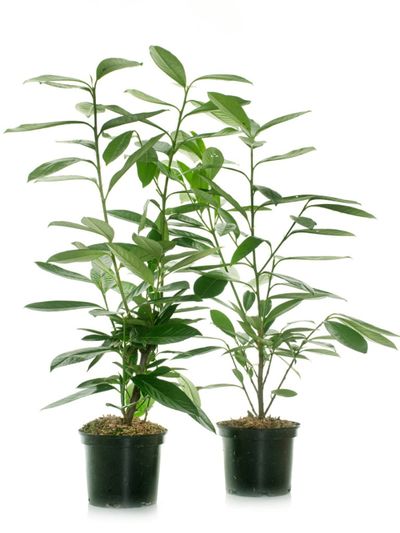About Dwarf English Cherry Laurel
This plant, Prunus laurocerasus ‘Nana,’ goes by many common names: dwarf English laurel, dwarf cherry laurel, and Nana English laurel. Whatever you call it, this is a versatile and attractive evergreen shrub. As the names suggest, it grows low and compact. The leaves are large and glossy green, and the flowers bloom white with a pretty fragrance. The cherry in the name is for the berries. They begin green, turn bright red, and finally black. English laurel plants are hardy in USDA zones 7 through 9.
English Laurel Landscape Use
As a compact shrub that grows low and fills in densely with leaves, this is an ideal border plant. Anywhere you need a low hedge or an edge for a bed or walkway, dwarf English laurel is a great choice. You can also grow it in a container and trim and shape it like a topiary. Birds love this shrub, so it’s great for wildlife gardens and dwarf cherry laurel also does well in areas with urban pollution and salty air.
English Laurel Care
English laurel is pretty easy to care for once you have it established. It does prefer rich soil, so before planting dwarf English laurel, amend the soil with some compost. Make sure it will get some sun, but partial shade is fine. Water the shrubs daily or every few days until they get established and then weekly or as needed depending on rain conditions. For the first growing season, water deeply to help the roots grow and establish. Dwarf English laurel grows slowly, so although it will need occasional trimming and pruning, you won’t need to do it often. The best pruning time is in the spring after flowering. Early spring is also a good time to fertilize this shrub and once a year is adequate.
